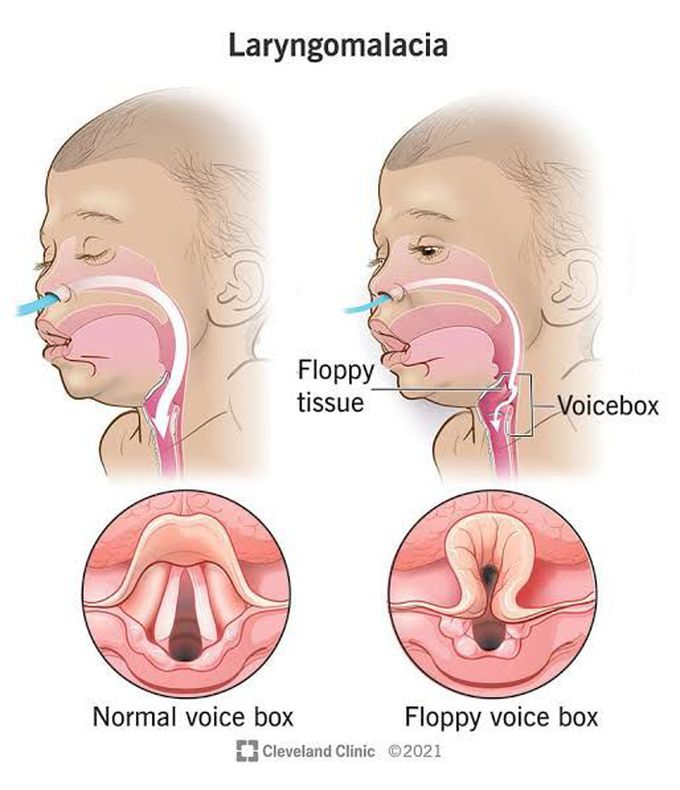


Diagnosis of laryngomalacia
Your healthcare provider will conduct an examination and ask you about your baby’s overall health. They may also perform a test called a nasopharyngolaryngoscopy (NPL), which uses a tiny camera to view your baby’s voice box. If a laryngomalacia diagnosis is made, other tests may be necessary to determine the extent of the condition. These may include: Neck or chest X-rays: These imaging tests can tell your healthcare provider if your baby has any other abnormalities that may be contributing to noisy breathing. Microlaryngoscopy and bronchoscopy (ML&B): A lighted scope is used to examine your baby’s windpipe and voice box to see what is causing loud breathing. ML&B is performed under general anesthesia. Airway fluoroscopy: This procedure combines X-rays and a contrast agent (such as a dye) that illuminates problematic areas within the body. Impedance probe: During this procedure, a small tube is inserted through the nose and into the esophagus. A measuring device is then used to measure the amount of stomach acid that reaches the esophagus. Babies who undergo this procedure usually stay for at least one night in the hospital.

